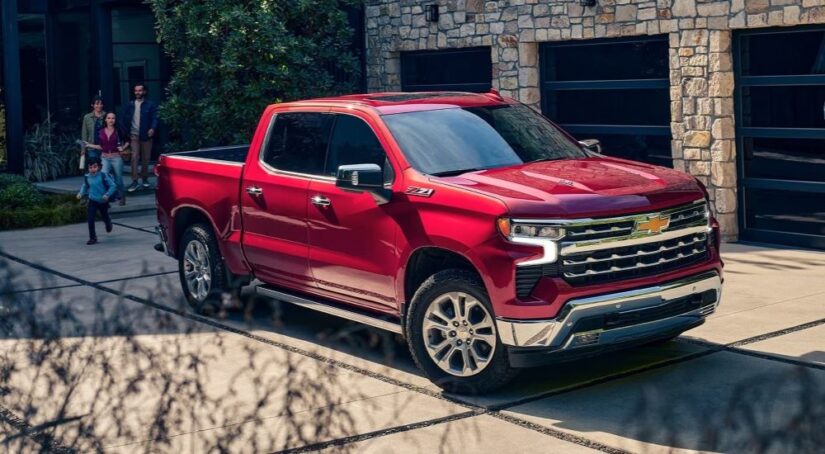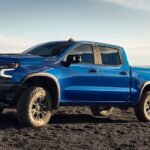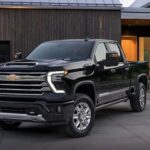If you’ve been shopping at your local Chevy dealer lately, you’ve probably seen a lot of trucks. Pickups are popular options because their open cargo beds and high towing capacities can come in handy for everything from construction jobs to hauling large kitchen appliances to kicking back at a tailgate party. But how big of a bed and high of a towing capacity does the average driver actually need?
If you don’t own an immensely heavy trailer or plan on transporting a bed full of concrete blocks, you probably don’t need a heavy-duty pickup. In Chevy terms, that means you can set the Silverado HD aside. That leaves two options remaining: the midsize Colorado and the full-size Silverado 1500. Let’s break down the differences between the 2024 models of these two Chevy trucks so you can decide which one is the best fit for you.
Customization
Many truck owners in America have different needs, so automakers create a wide variety of shapes, sizes, and engines to please as many customers as possible. Since full-size trucks are generally more popular than midsize trucks, they tend to offer more ways for you to customize. That’s certainly true for Chevrolet’s lineup. The Silverado can be had with either a regular cab, a double cab, or a crew cab and offers a short 5’8” box, a standard 6’6” box, and a long 8’ box. It can also be had with either rear-wheel drive (RWD) or four-wheel drive (4WD) and offers four different engines (a turbocharged 4-cylinder, two gas-powered V8s, and a diesel-powered option). That’s on top of the range of trim levels that range from affordable, basic options to off-road ready models to luxurious trucks full of comfort and convenience features, not to mention the packages available to help you add extra style, tech, or towing capability.
The Colorado, on the other hand, is a simpler affair. It, too, has several trim levels that can deliver no-frills affordability or off-road capability and can be had with either RWD or 4WD. But it has just one cab size (crew cab), one box size (5’2”), and one engine: the same turbo-four that comes standard on the Silverado 1500. However, that engine is tuned differently for off-road trims, making it possible to produce more horsepower and torque.
If you know exactly what you want out of a truck and would like to optimize your vehicle to fit your needs exactly, the Silverado is going to have the advantage here. This is especially true if you want to put in a factory order and be able to have total control over your truck’s design (within limits, of course — not every option is available on every trim level). But if you find decision-making tiring rather than exciting, the Colorado may look like the better option. Its lineup is easy to understand, and you’re more likely to find what you’re looking for already in stock at your local dealership.
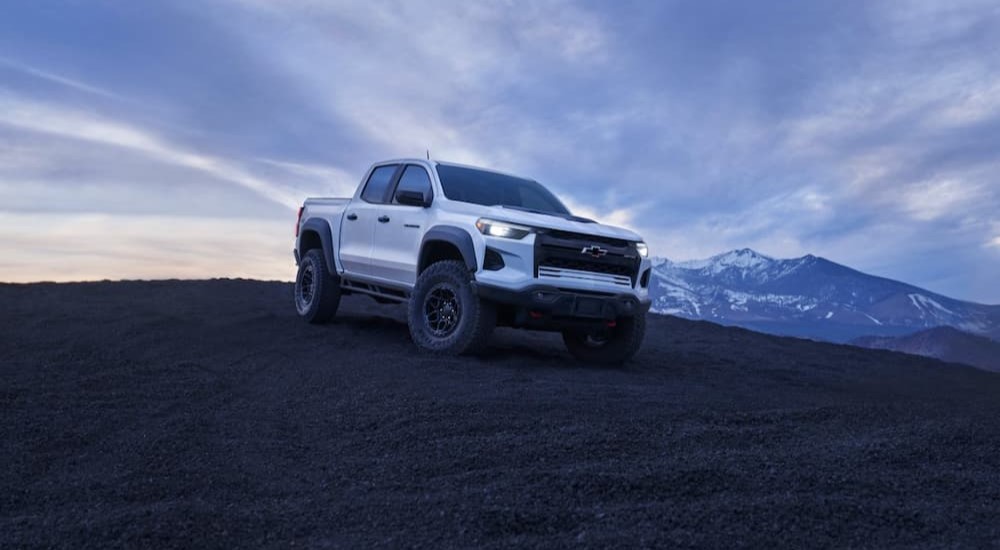
Performance and Capability
This probably won’t come as a big shock, but the larger Silverado 1500 has the bigger towing and hauling figures. Properly equipped, the Silverado can haul up to 2,260 lbs of payload or tow as much as 13,300 lbs (these maximum figures require different engines, so you can’t get both on one truck). The Colorado, when properly configured, can tow up to 7,700 lbs and haul up to 1,684 lbs of payload (with only one engine in the lineup, you can get both of the Colorado’s top figures in a single truck as long as you stick to the WT and LT trims). If the Colorado is powerful enough for your personal needs, then there’s not much advantage to paying for performance you won’t use. But if you have a heavy trailer or need to haul over 2,000 lbs of payload occasionally, it’s worth upgrading to the Silverado.
Cabin Space
We’ve already mentioned that the Colorado’s only bed length is shorter than the shortest option on the Silverado. Cabin space is similarly different but a little more complicated since the Silverado offers three different cab configurations. The Silverado’s regular cab offers slightly more headroom and significantly more shoulder room and hip room than the Colorado’s cab but only has one row of seating, while the Colorado comes standard with a four-door crew cab with two rows.
The Silverado cabs that do have a second row (the double cab and the even longer crew cab) both have more headroom, legroom, shoulder room, and hip room than the second row of the Colorado while also providing a bit more space for the first row passengers. If you feel that having an open cab with plenty of breathing room and a back row that’s fit for tall adults is a priority for you, the Silverado is going to be a better choice.
Affordability
The Silverado’s extra power and size come at a literal cost. The most basic trim (the WT), outfitted with standard equipment (which doesn’t unlock the truck’s maximum towing and hauling capacities), has a starting price of $36,800. The Colorado WT starts at $29,200, and its most expensive trim (the rugged, off-road-ready ZR2) only brings the starting price up to $46,800. For comparison, the Silverado 1500 ZR2 starts at $69,900. Of course, that extra money does get you a bigger truck and a more powerful one. The Silverado WT with the standard engine may not be able to tow as much as the Silverado High Country, but with a 9,500-lbs capacity, it can still tow almost 2,000 lbs more than the most powerful Colorado. It’s all a question of whether or not you’re actually going to make use of these advantages.
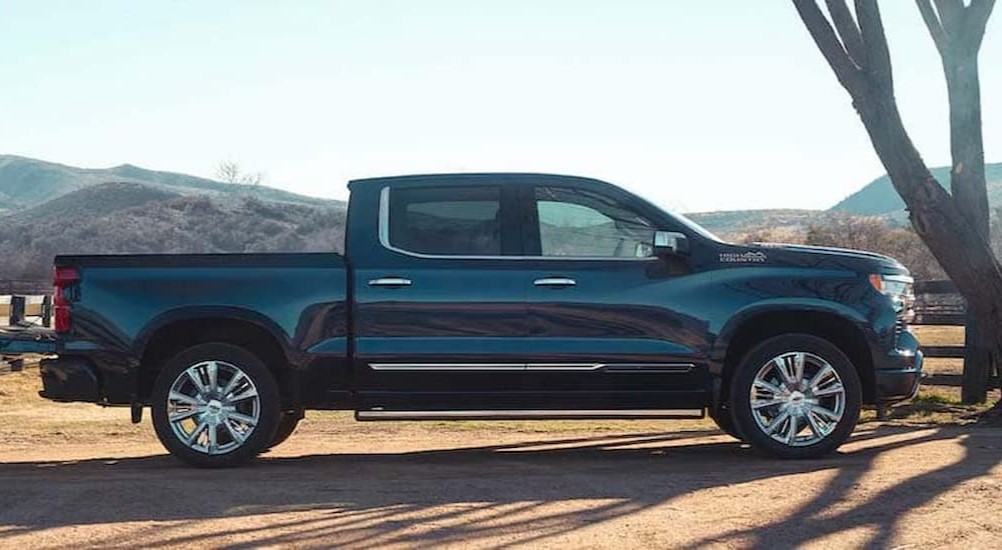
Onboard Tech
The Colorado just entered a new generation for the 2023 model year, while the Silverado 1500 hasn’t had a tip-to-tail refresh since the 2019 model year, which means that the Colorado comes standard with more modern tech, particularly on its lower trim levels. The 2024 Colorado WT comes standard with an 11-inch color driver information center behind the wheel plus an 11.3-inch touchscreen display. The infotainment system comes standard with Google Built-In, alongside wireless Apple CarPlay and Android Auto connectivity.
The Silverado comes standard with wireless smartphone connectivity across all trims, but the WT has a 3.5-inch monochromatic driver information center and a 7-inch touchscreen and doesn’t include Google Built-In. However, if you upgrade to the LT trim or above, you will get a 12.3-inch driver information center and a 13.4-inch touchscreen with Google Built-In; it’ll just cost a bit extra.
There are some features that are only available on one truck or the other. The 2024 Colorado has a safety feature that uses red LEDs reflected on the windshield to bring your attention to Forward Collision Alerts, for instance. But while the 2024 Silverado doesn’t have this feature, it does have an available Head-Up Display that can project actual driving directions and safety alerts onto the lower windshield, though it doesn’t come as standard equipment on even the highest trim, while the Colorado’s LED reflective windshield collision alert comes standard across all trims. The Silverado is also the only one of the two trucks to feature GM’s Super Cruise technology as an available feature, letting you drive hands-free on compatible roads.
What’s the Right Call?
As you can see, there are a lot of pros and cons to balance when choosing between the Colorado and Silverado. Sometimes, a certain factor will make the decision easy: if you need to be able to tow 8,000 lbs or more, then you’ll have to opt for the Silverado 1500, while if your budget tops out at $40k, then the Colorado is the obvious choice. Other times, it can be a little murky. At the end of the day, it all comes down to your personal needs, budget, and priorities. Now that you know the main differences, it should be easy to compare them against your wants and needs and make a smart decision.
